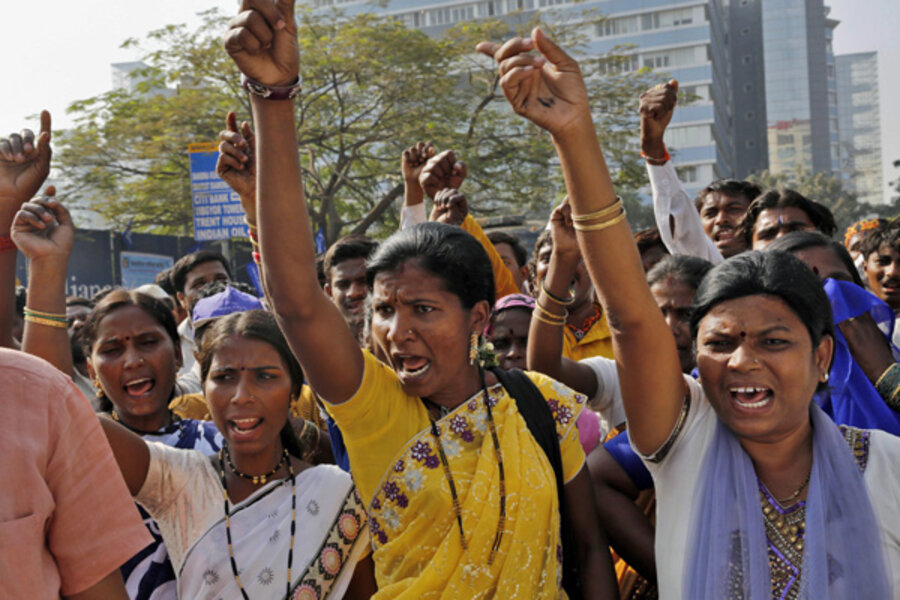Indian diplomat heads home, but India's anger is likely to linger
Loading...
| New Delhi
The Indian diplomat whose arrest in New York sparked a diplomatic row is on her way back home, but the bid to ease tensions isn’t settled just yet.
The dispute over the wages the diplomat was paying to her Indian household help in New York has left the India-US relationship badly frayed. The sense that this is possibly the lowest point the two countries have faced in recent years is widespread in New Delhi, and Indian analysts believe it will take time to repair.
“Ms. Khobragade's return should end the public spat over the issue, but diplomats of the two countries will need to revert to quietly resolving some of the diplomatic issues raised by the episode,” says retired Commodore C. Uday Bhaskar, former director of the Institute for Defense Studies and Analyses in New Delhi.
The Indian government today ordered the United States to remove one of its diplomats from New Delhi, hours after a deal last night that US officials hoped was a facesaving measure for both sides.
Ms. Khobragade was granted diplomatic immunity, meeting India’s demands. But before that occurred, she was indicted by a US federal grand jury in Manhattan on charges of visa fraud. The US court indictment papers charge that Khobragade lied on her visa papers and made her maid work 100-hour weeks for about one-seventh the US minimum wage.
To some Indian observers, the delay in resolving the situation suggests a dismissiveness toward India that is troubling.
“The solution reached now could have been reached several days ago. But to let the issue fester for a month, for a country the United States calls a strategic partner, is unusual,” says Lalit Mansingh, former Indian ambassador to the United States. "That it was allowed to become so messy shows the United States doesn't care about India and makes you wonder if the Indo-U.S. strategic relationship is still alive or not."
Repairing the relationship will not be easy, because India has gone to extreme limits in applying local laws to American diplomats in response to the US insistence that local laws apply to Indian consular staff. These include asking the US Embassy not to host film screenings without a license, barring them from importing alcohol, and effectively ordering that a club run by the American embassy be shut down.
“This incident demonstrates that the relationship existed more at the political level than at the diplomatic level. It is as if the diplomats on both sides decided the relationship wasn't strategic enough to show more courtesy and grace,” says Samir Saran, vice president of the Observer Research Foundation, a New Delhi think tank.
The relationship of the United States with New Delhi has warmed significantly since President Clinton visited India in 2000. Prior to that, India had been closer to the former Soviet Union, and it defied the world with nuclear tests in 1997. India-US ties grew after 9/11, though more recently, strains have emerged over India's delayed implementation of the India-US civil nuclear energy deal and the slowing down of trade relations.
Chances are slim that the relationship will return to normal in a hurry. US Energy Secretary Ernest Moniz postponed his trip to India this month, India will hold general elections this spring, and the opposition Bhartiya Janata Party's candidate for the post of prime minister, Narendra Modi, is currently barred from getting a US visa for allegedly looking the other way as Hindu mobs killed at least 1,200 Muslims in Gujarat in 2002. Should Mr. Modi become prime minister, a strong possibility, the Khobragade imbroglio may seem like a much lesser embarrassment for the bilateral relationship.






